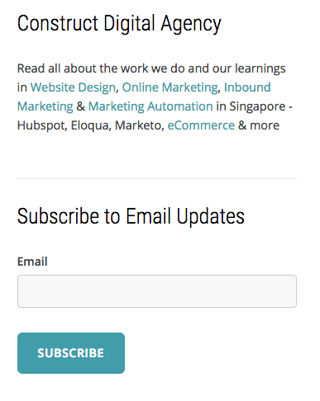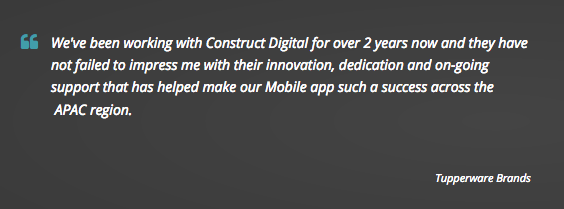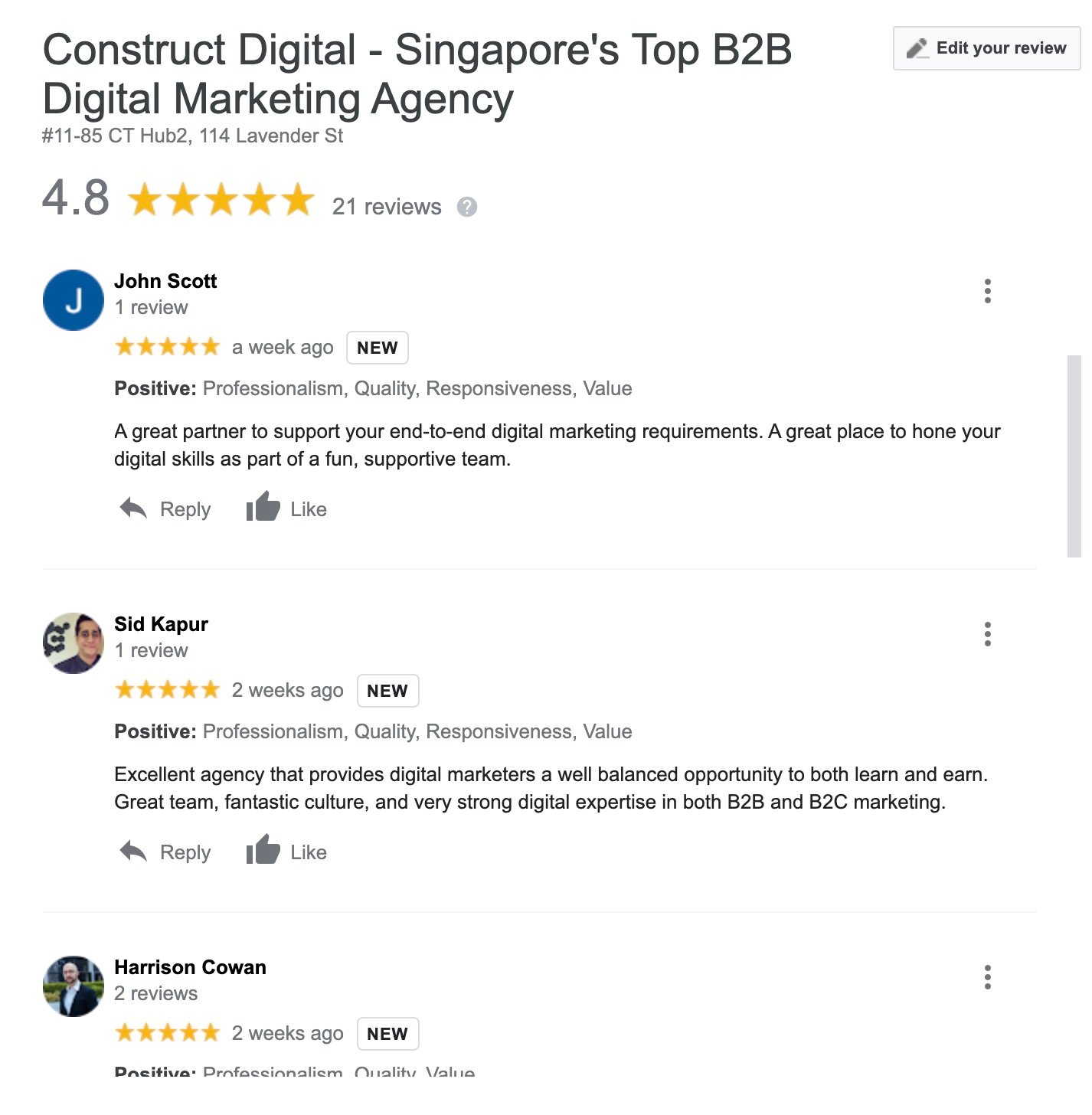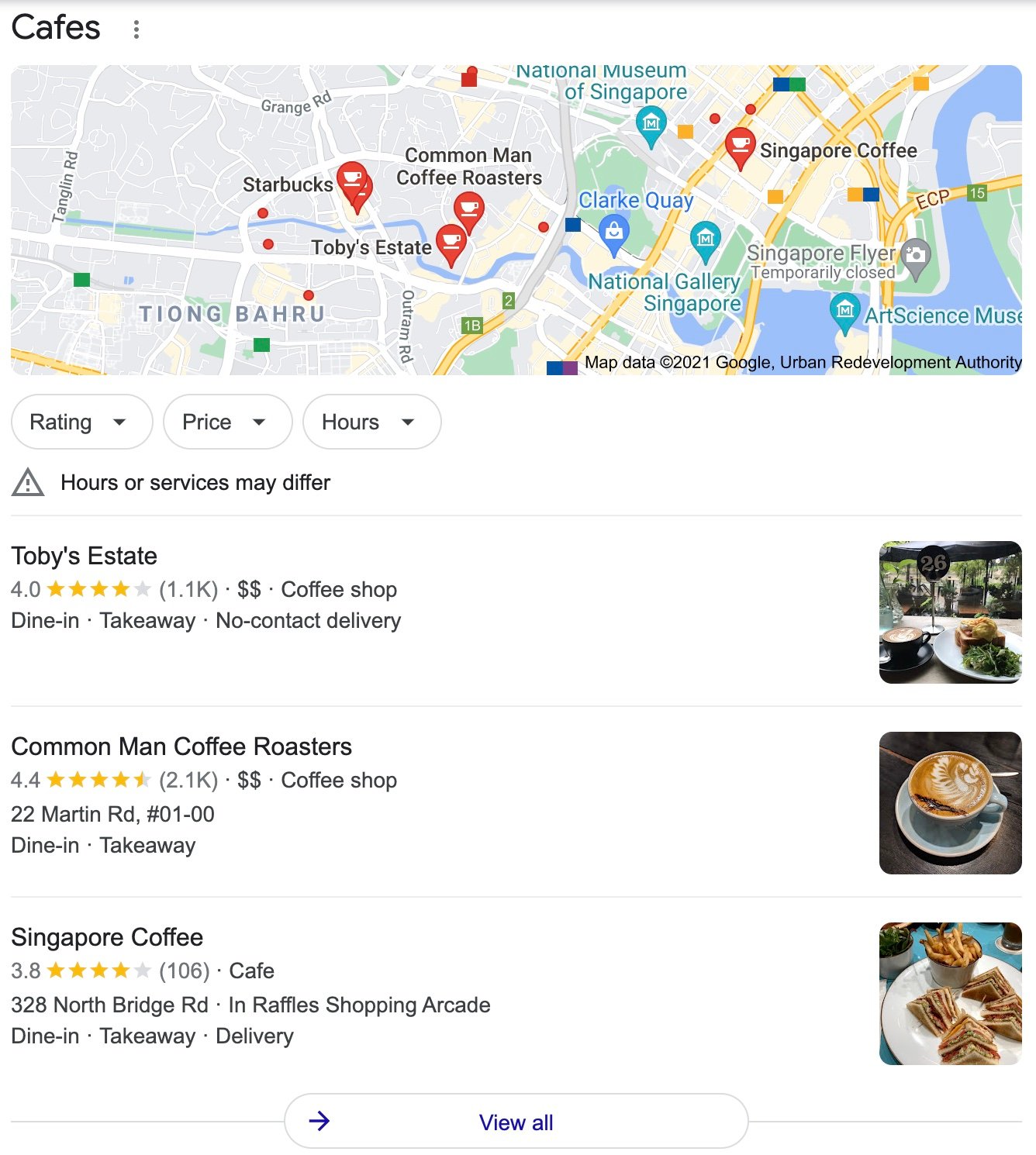

7 Ways To Improve Conversions On Your Website


It's 2015 and the company website continues to be the most important yet overlooked marketing tool in the organisation. This is particularly true for many SMEs in Singapore engaging in B2B businesses typically in niche industries. I'm talking about businesses that have been around for over 10 years, pre-internet era brick-and-mortar type businesses.
The role the website plays for most of these companies is to simply provide a thin layer of information, directions, and perhaps even a contact form. While these companies will probably continue to operate well into the future, the truth is that they are probably leaving money on the table by not utilising their website to its potential.
The last point is worth repeating: if your website is not driving your business any leads, you're doing it wrong and your competitors are laughing to the bank with this.
So with that, here are 7 low-hanging improvements that can increase conversions on your website:
1. Clear call to action on your landing/money pages
But first, what is a money/landing page? Strictly speaking, any page can be a landing page but for obvious reasons, it doesn't make sense for a company's About Us page to be a good landing page.
Landing pages are normally services and products sold by the company. This can be a product page to a category page or even a service page. When a visitor takes action on these pages, there's normally money to be made hence the term "money page".
Landing pages are typically centred around one key phrase based on the product of the problem the company is trying to solve.
Product Landing Page

Category Landing Page
Service Details Landing Page

Of course, the most important landing page for any website is the homepage.
In each case, there should be a very clear call to action. This could be an email sign up form, a purchase button or even a contact us button. Whatever the case, there should be a bright shiny button that you want the visitor to take, after consuming the information on the page.
Just think of visitors to your site as magpies. They have an extremely short attention span and you want to do as much as possible to capture the visitor before he flies away.
2. Email capture form at the sidebar
Collecting your visitor's email is the easiest way to get qualified leads. The email capture form is normally presented above the fold on the right hand side.

It is more common for the email capture form to be on the blog sidebar. The reason for this is that the blog allows for more versatile content to be published, which in turn will attract organic Google queries to the article.
This brings us to the next point: you need to have a well-maintained blog.
3. Blog
A website typical has a bunch of pages that provides information to their customers. The content on these pages don't normally change. Once in a while, new pages might be added or taken away to reflect the changing informational requirements of customers. For the most part, the content on the website is largely unchanged. This is where the blog comes in.
It's no secret that Google values fresh content. The company blog is a tool that allows for new content to be updated all the time. However, what we've seen at Construct is that the company blog tends to fail due to the following reasons:
- No clear ownership
- Does the blog belong to Marketing, Sales or IT?
- Don't know what kind of content to post
- To be honest, this is lazy thinking. There is always interesting content no matter how sleepy your industry is. It is the job of the content marketer to expose such information
- Hard to update the blog
- Sadly, in today's day and age, IT is still a hindering factor when it comes to something as simple as producing content for the company blog
- No clear ROI leading to low motivation
- Sometimes blog content initiatives start strong. Then it slows down after a couple of months before coming to a complete standstill. The company must be willing to invest 3 - 6 months of diligent work and resources to see the upside of blogging regularly on the company blog
Trying to keep a blog updated with relevant and timely content is hard work. It requires a well thought out content plan, a content schedule as well as an overarching Inbound Marketing plan.
4. To receive, you must first give
The easiest way to start attracting an audience to your website is by giving away information. For example, if you're a tax accountant, write a 1000 word authority article about The Top 10 Tax Mistakes New Companies Make in Singapore. If you're in the child care industry, collate and list the Top 5 Most Healthy Snacks for Your Baby at Hawker Centre.
Whatever useful information you think your target audience might find relevant, make it your business to provide that content. Don't stop at providing just a 300 - 400 word overview. Dive deep and try to add as much information as possible.

One common use flow is for a company to write an authoritative white paper and request for the visitor's email before they can download it.
Some ways to uncover good content to write about is to find old but good articles and give it an updated 2015 treatment. To take this one step further, you can reach out to the original poster of the article and possibly get a link back to your article too.
Here are some examples of authority articles:
- https://moz.com/google-algorithm-change
- http://www.quicksprout.com/the-definitive-guide-to-copywriting/
- https://ecommerce.shopify.com/
5. Customer Testimonials
Testimonials are a powerful way of increasing conversions. They act as a form of validation for your product.

The testimonial section is typically found on the homepage towards the bottom of the page. The rational for this is such: when a visitor lands on your landing page, the page needs to be able to fulfill the query/problem that got the visitor to the site in the first place.
Once that message has been communicated, the next question in the visitor's mind is: can this company actually do what it claims to do? This is where testimonials come in. They act as social proof to the visitor that your company is able to make good on its word.
This is a tried and tested method that has proven to work over different industries.
6. Contact information displayed clearly in the header
A lot of business still gets conducted over the phone. So, it will be helpful to have the contact information present in the header as well. The basic rule is: don't make your customer think. Do the thinking for them.

This design pattern is generally more frequently seen in the websites of local services like pest control, air-con servicing and the like.
7. Google+ Reviews
It is a well-known fact that ratings and reviews on a product will increase conversions. Amazon is the best example of utilising this design in its product pages.
Reviews validate the quality of a product. A customer is more likely to purchase a product if he knows 10 other people had bought the same item before him. While the lack of reviews doesn't mean a product is necessarily bad, the abundance of good reviews for a product will cast a very favourable light on it.
Reviews can also work for brands and businesses. Because Singapore users don't really use Yelp, the next most obvious place for reviews to work is in Google itself.

The Google reviews follow your business everywhere it goes. It doesn't just show up for your Google+ Page or under your website. This can be seen with a search for "coffee singapore".
Of the listed coffee places above, the one that is most likely to receive clicks are the coffee places with positive ratings.
To get on this reviews game, the business must first have a Google+ Business Page. After verifying that you own the business, you can start asking existing and past customers to leave a review on your page. This is the easiest and quickest way to show positive reviews for your business that should have a positive impact on your bottom-line.
Image sources and credits:
Header and body images: Pexels
More insights

